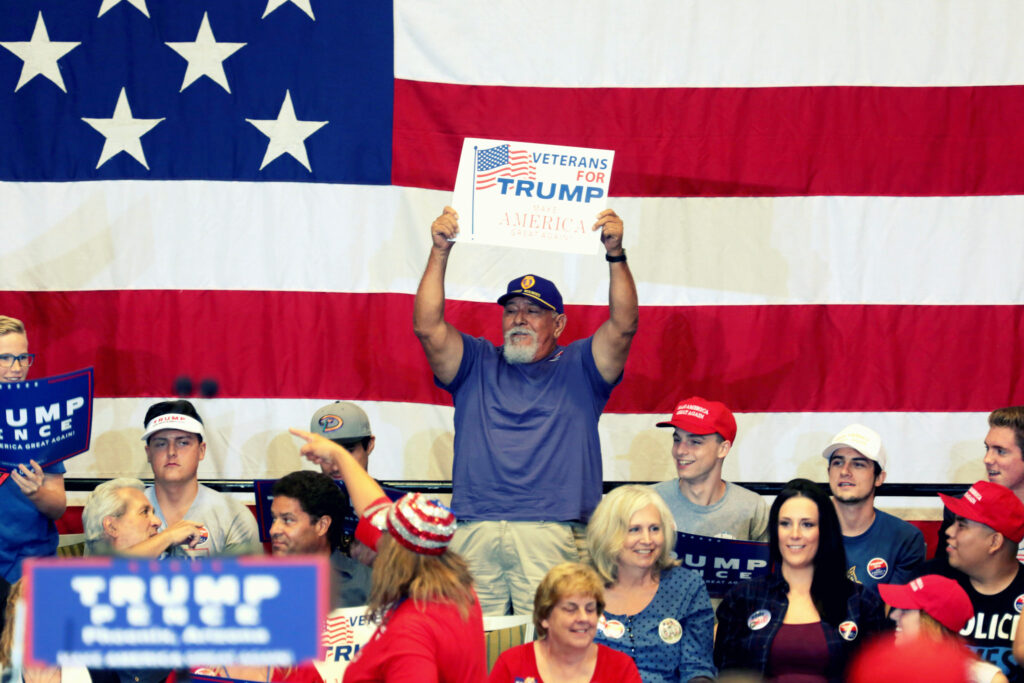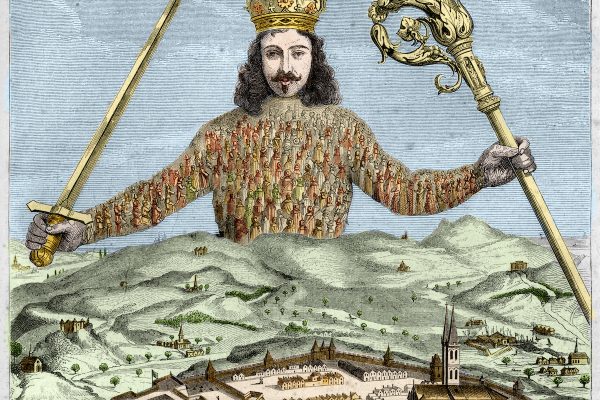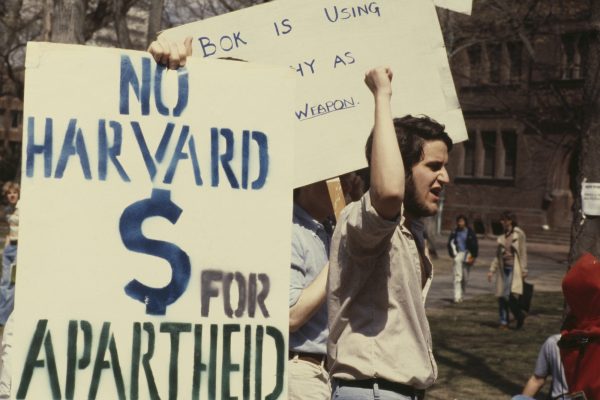In his Pensacola, Florida, speech endorsing Roy Moore last Friday, Donald Trump addressed the “forgotten men and women of this country.” This was not the first time that Trump has spoken of the forgotten many. He made mention of them in his election victory speech and then again at his inauguration. “You will never be ignored again,” he announced. At a rally in West Virginia, he went one step further, saying, “Your dreams are my dreams, your hopes are my hopes, and your future is what I’m fighting for each and every day.” Time and time again, Trump has asserted an unlikely identification with the “ignored,” claiming that he not only understands their feelings but also shares them. But who are the forgotten, and why does Trump keep returning to them?
Who are the nation’s forgotten men and women and why does Trump keep returning to them?
History helps answer this question. As a formulation, the idea of the nation’s “forgotten men and women” was first made famous by Franklin D. Roosevelt in a presidential campaign radio address in 1932. But Roosevelt’s forgotten men and women were fundamentally different from those invoked by Trump and served an entirely different purpose. By tracing how the phrase has changed meaning between then and now, we can understand how Roosevelt’s vision was subverted by the inverted populism that the current president has mastered, but which has been in circulation since the New Deal.
In his April 1932 speech, Roosevelt referred to “the forgotten man at the bottom of the economic pyramid,” proclaiming the need to rebuild the economy by working “from the bottom up and not from the top down.” In saying this, he was explicitly repudiating Yale professor William Graham Sumner, who originally coined the phrase in an 1876 essay, “The Forgotten Man,” often taken to be a prime specimen of social Darwinism. Sumner described the forgotten man as a productive citizen, overburdened by society’s demand that he support the unproductive: “He works, he votes, generally he prays—but he always pays—yes, above all, he pays,” Sumner wrote. Roosevelt’s critics took notice, arguing that he had distorted Sumner’s intention. If Sumner’s forgotten man was the taxpayer, they claimed, Roosevelt’s forgotten man was the one who lived off the taxes of others.
Soon after Roosevelt defined the forgotten man as a person whose economic position justified the New Deal, the meaning of the term changed again. This time it came to symbolize the person victimized on very different economic grounds. In 1934 Congressman James M. Beck called the taxpayer “the new forgotten man.” In 1940 another Republican representative, Bruce Barton, labeled the “middle-class citizen” the “latest reincarnation of the forgotten man.” By 1951 Northwestern political scientist William M. McGovern brought these two groups together when he spoke of the “forgotten man of the middle class” who was “rapidly being taxed out of existence.” Rather than the “fellow out of work,” argued Merryle Rukeyser in 1951, the label more properly belonged to “the taxpayer who pays the freight for the adventures of politicians.”
In 1932 Roosevelt spoke of ‘the forgotten man at the bottom of the economic pyramid,’ arguing for the need to rebuild the economy by working ‘from the bottom up and not from the top down.’
The taxpaying, middle-class citizen whose interests trumped those of the poor on government assistance formed one image of the anti–New Deal forgotten man. A second trajectory of forgotten-man discourse was the substitution of the entrepreneur for the worker, or, more accurately, the elision between these two categories. “Is the businessman the forgotten man of modern life?” asked a Newport Daily News editorial in 1951. The next year the Washington Record Herald called the “white collared salaried worker” the “nation’s new forgotten man.” By 1954 John Franklin Carter included the “professional man” in this category, and in 1959 the Odessa American wrote that those earning more than $10,000 per year (roughly $83,000 today) are unjustly “characterized as being villainous” when in fact they were part of “a new race of forgotten men, the taxpayer” who “pay the bills.” Unconcerned about the woes of those at the bottom of the economic pyramid, conservatives appeared to sympathize with everyone else. When, in a confidential memo to the U.S. Chamber of Commerce in 1971, Lewis F. Powell, Jr., wrote “the American business executive is truly the ‘forgotten man’,” the reorientation to those at the pyramid’s apex was completed.
A parallel transformation occurred as the forgotten man metamorphosed from Roosevelt’s unemployed person to Powell’s corporate executive. There was increasing anger over the fact that the forgotten man, now understood as affluent, was being forced to fund what in 1952 columnist John Ackelmire called “schemes of social ameliorization” aimed at the non-affluent. Two years later another critic, the columnist John Franklin Carter, argued that the burden of funding “all the various measures proposed for the betterment of humanity and the salvation of civilization” fell on the “business or professional man.” In an editorial on the forgotten man in 1960, the Indianapolis Star praised him for “uncomplainingly paying his taxes.” Speaking on behalf of the silent taxpayer, the paper then launched a complaint of its own. The political class, it claimed, was “too concerned with the interests of minorities, here and abroad, to bother with the interests of ‘The Forgotten American.’”
The shift from concerns about paying for general “ameliorization” to specific claims about “minorities” marked an important turn in forgotten-man rhetoric, which increasingly became a language of racialized backlash. (A hint of this was presaged in the 1954 passage cited above which denominated taxpayers as “a new race of forgotten men.”) Over the course of the 1960s, the forgotten man became increasingly resentful and the targets of his resentment became more explicit. Miller Upton, the president of Beloit College, expressed this indignation in 1967 when he said, “I have just about reached the end of my tolerance for the way our society now seems to have sympathetic concern for the misfit, the pervert, the drug addict, the drifter, the chronic criminal, the under-achiever.” His lack of tolerance for the misfits was exacerbated by his view that people like him were being “laughed at” by the very “under-achievers” they were subsidizing. Upton’s Trumpian fear of being mocked went hand in hand with a concern that the forgotten man was not just being extorted but also humiliated by unworthy people.
In time forgotten man rhetoric increasingly became a language of racialized backlash.
What began as a critique of Roosevelt’s appropriation of the forgotten man turned into a vilification of the poor, the downtrodden, the outsider. In 1968 William Lowndes, president of conservative business lobby Southern States Industrial Council, brought the incipient racial and cultural inferences of forgotten-man rhetoric to the fore. He began by distinguishing the forgotten man from “the disadvantaged, the impoverished, the indigent, and even the indignant who prefer to remain indolent.” Lowndes then claimed that the forgotten man could not be defined by class: he was “a hardworking individual, whether he be executive or artisan.” Instead, what defined him was a white racial identity that was at its breaking point.
He is the same forgotten man who is a ‘bigot’ or a ‘racist’ and a veritable beast if he has any personal preference as to the buyer of his dwelling. He is all of these things if he belongs to a club on the basis of their acceptability on the basis of standards selected by the members themselves.
Lowndes quickly moved from economic resentment to anger that the civil rights movement had made bigotry visible. To be forgotten in this formulation was to be made to feel badly for exercising racial and class privilege. Lowndes claimed that the forgotten man’s racial resentment extended beyond the borders of the United States: “He sees his tax dollars used to support the United Nations, then reads of some tirade against his country by a costumed tribal chieftain from some Afro-Asian mini-nation freeloading at that same UN.” He concluded by calling on all forgotten men to vote as a bloc in the upcoming 1968 presidential election, “whether farmer, junior executive, union member, corporate head, or laborer.” This was not Roosevelt’s forgotten man at the bottom, nor was it Powell’s forgotten man at the top. It was akin to the coalition that Richard Nixon, the candidate who won that election, called the “silent majority.”
The discourse of forgotten men, emergent as Donald Trump inherited his first millions, gave children of privilege sanction to understand themselves as victims.
Donald Trump’s invocation of the forgotten man is much less explicit than was Lowndes’s call to arms in 1968. Nevertheless Trump’s forgotten men and women are the descendants of Lowndes and other conservatives, who used this class to frame a compelling political narrative. In their vision, the welfare state and social movements to expand it were not efforts designed to help the less fortunate but rather a multi-pronged assault on the pocketbooks and dignity of white, middle-class Americans. Theirs was a language that mythologized white people living above the poverty line as a group that paid more than their fair share—that “seldom goes to extremes about anything,” in Upton’s words—and yet were being pushed into protest by the combination of economic exploitation and humiliation that they faced. Such a discourse, emergent as Donald Trump inherited his first millions, gave children of privilege sanction to understand themselves as victims.
The conservative forgotten-man rhetoric fundamentally shaped Trump’s worldview and politics. He won the support of a cross-class coalition of whites who, whatever their position in society, felt ignored, exploited, and disrespected. Moreover, it allowed Trump and his followers, a group that has benefited disproportionately from a racialized welfare state, to weaponize resentment toward the less fortunate, to express cruelty toward racial others at home and abroad, and to view diversity as weakness.
If Trump has made elite victimization the centerpiece of his political vision, he has done so by claiming not just to represent but to embody society’s (white) economic victims. His implausible claim of identification with the ignored victims of society is best understood as an assertion of racialized unity. Trump narrates a dystopian fantasy in which a cross-class group of productive white people are forced to subsidize unproductive and unworthy others. Trump sees himself, in other words, not just as spokesman for the forgotten, but as the embodiment of the erasure, humiliation, and injustice that the group he champions endures. He does not just speak for the forgotten man, he is the forgotten man.








